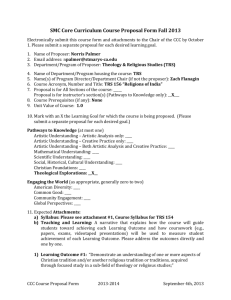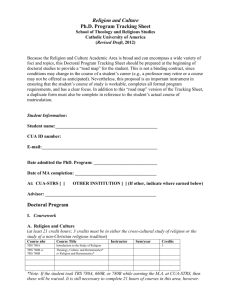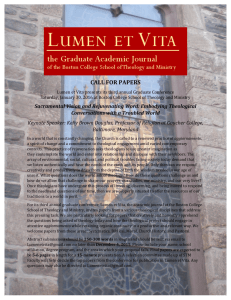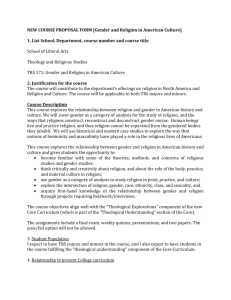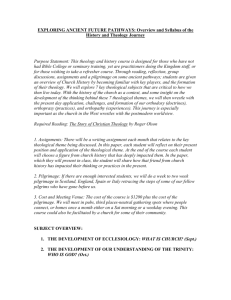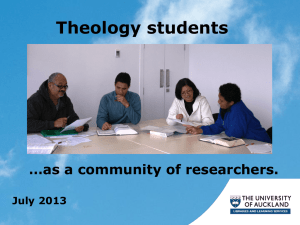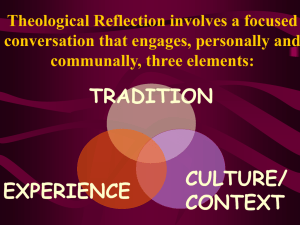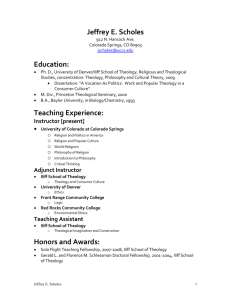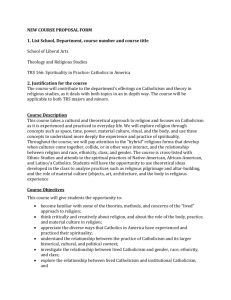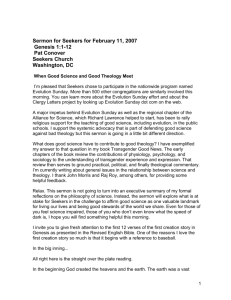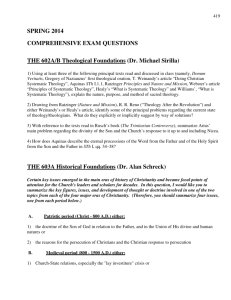Proposal
advertisement
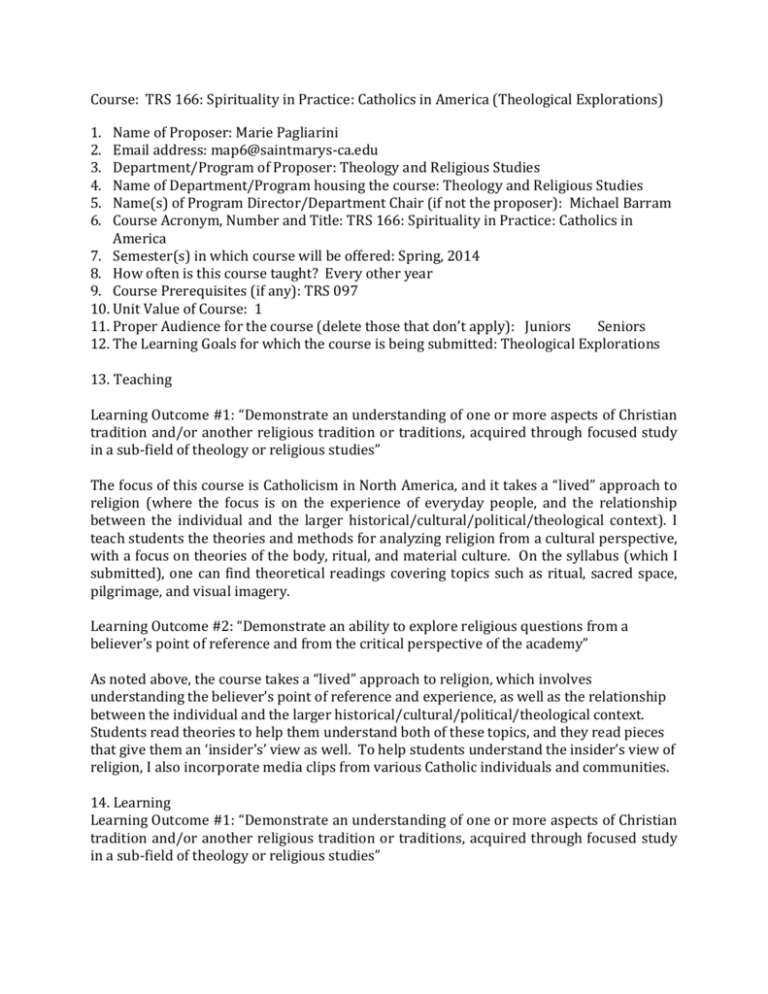
Course: TRS 166: Spirituality in Practice: Catholics in America (Theological Explorations) 1. 2. 3. 4. 5. 6. Name of Proposer: Marie Pagliarini Email address: map6@saintmarys-ca.edu Department/Program of Proposer: Theology and Religious Studies Name of Department/Program housing the course: Theology and Religious Studies Name(s) of Program Director/Department Chair (if not the proposer): Michael Barram Course Acronym, Number and Title: TRS 166: Spirituality in Practice: Catholics in America 7. Semester(s) in which course will be offered: Spring, 2014 8. How often is this course taught? Every other year 9. Course Prerequisites (if any): TRS 097 10. Unit Value of Course: 1 11. Proper Audience for the course (delete those that don’t apply): Juniors Seniors 12. The Learning Goals for which the course is being submitted: Theological Explorations 13. Teaching Learning Outcome #1: “Demonstrate an understanding of one or more aspects of Christian tradition and/or another religious tradition or traditions, acquired through focused study in a sub-field of theology or religious studies” The focus of this course is Catholicism in North America, and it takes a “lived” approach to religion (where the focus is on the experience of everyday people, and the relationship between the individual and the larger historical/cultural/political/theological context). I teach students the theories and methods for analyzing religion from a cultural perspective, with a focus on theories of the body, ritual, and material culture. On the syllabus (which I submitted), one can find theoretical readings covering topics such as ritual, sacred space, pilgrimage, and visual imagery. Learning Outcome #2: “Demonstrate an ability to explore religious questions from a believer’s point of reference and from the critical perspective of the academy” As noted above, the course takes a “lived” approach to religion, which involves understanding the believer’s point of reference and experience, as well as the relationship between the individual and the larger historical/cultural/political/theological context. Students read theories to help them understand both of these topics, and they read pieces that give them an ‘insider’s’ view as well. To help students understand the insider’s view of religion, I also incorporate media clips from various Catholic individuals and communities. 14. Learning Learning Outcome #1: “Demonstrate an understanding of one or more aspects of Christian tradition and/or another religious tradition or traditions, acquired through focused study in a sub-field of theology or religious studies” Students are tested on their understanding of the course material through two papers, a final exam, and various homework and writing assignments. All the assignments for the class are designed to test student understanding of the complexity and richness of Catholicism in North America, and their ability to apply theory to religious ‘data.’ Learning Outcome #2: “Demonstrate an ability to explore religious questions from a believer’s point of reference and from the critical perspective of the academy” Although all of the assignments for the course require students to demonstrate their understanding of the way that theory (“critical perspective of the academy”) can be used to elucidate the believer’s point of reference and experience, the Devotional Analysis Paper tests student’s knowledge in this area most clearly. The Paper requires students to analyze interview material (they interview several Catholic individuals) through the perspectives of academic theory, in order to demonstrate their in depth understanding of both.
